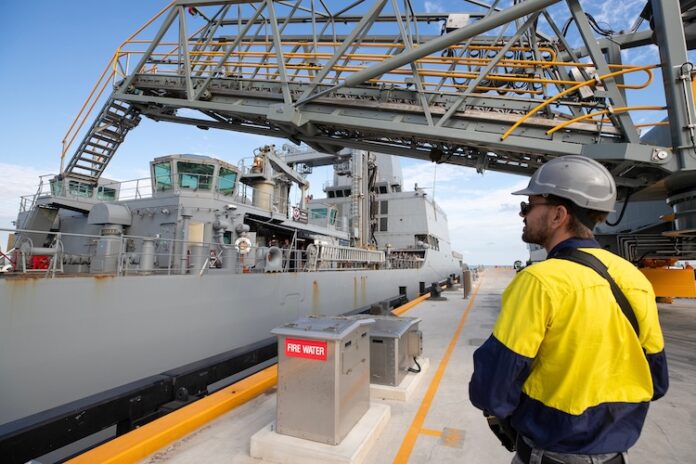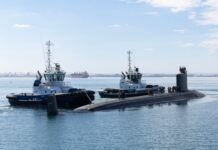
By John Coyne*
If Australia is serious about defending its interests and shaping its region, building out Darwin’s marine industry must be at the forefront of our national agenda. Darwin is where Australia’s northern frontier meets the Indo-Pacific’s strategic crossroads. From: The Strategist. The Australian Strategic Policy Institute.
The Northern Territory government is already making tangible progress. By releasing its Maritime Industry Development Plan and investing in the Darwin Ship Lift, it has laid the groundwork for the next phase of maritime industry growth. However, building Darwin’s sovereign marine capability requires more than shipyard infrastructure and policy intent.
What’s now needed is a coordinated, sustained national effort—led by the Commonwealth, enabled by the NT government and underpinned by private sector investment—to transform Darwin into a critical maritime node in Australia’s defence-industrial and economic architecture.
As the Indo-Pacific becomes increasingly contested, supply chains become more vulnerable and coercive statecraft becomes more common. Darwin’s proximity to key maritime routes and regional partners makes it an indispensable asset. A robust marine industry in Darwin would allow Australia to project influence, sustain operations and support partners across the northern arc, from the eastern Indian Ocean to the western Pacific. This is not simply about regional economics, but a foundational element of national sovereignty.
The private sector will be important to this process. The sector’s investment should include committing capital to expand marine logistics, repair and sustainment services, as well as engaging in equity partnerships with industrial facilities tied to the Darwin Ship Lift. The energy, logistics and resources sectors, which rely on maritime infrastructure to service operations across northern Australia and the Timor Sea, should be at the front of this charge.
Building a marine industry in Darwin will also require people. Skilled labour shortages already constrain the growth of northern Australia’s economy across various sectors. Without a coordinated investment in trade training, apprenticeships and Indigenous workforce development, the marine sector will unsustainably depend on external contractors and fly-in-fly-out models. The private sector and the government must collaboratively invest in the future workforce, focusing on emerging maritime technologies, sustainment trades and operational support.
The federal government has a central enabling role. Through the Northern Australia Infrastructure Facility (NAIF), the Department of Industry, Science and Resources (DISR), and the Department of Defence, Canberra can and must provide the strategic weight and funding necessary to build confidence, de-risk private investment and connect Darwin’s marine capability to national strategic priorities.
NAIF must continue to expand its role as a first-mover investor and adopt a proactive approach. This should apply to co-financing infrastructure needed to support industrial-scale ship repair and maintenance, logistics handling and utility upgrades. Rather than reacting to low-risk, late-stage business cases, NAIF must support the first steps where the commercial market fears to tread, but where the national interest demands action.
DISR must integrate Darwin’s marine capability into a broader national industrial strategy. Programs such as the Modern Manufacturing Initiative and the National Reconstruction Fund should prioritise investment in dual-use maritime technologies, automation and sovereign sustainment capability to serve commercial and Defence needs. Darwin should be designated a priority industrial precinct for maritime innovation and logistics, linking northern Australia’s marine services to Australia’s broader manufacturing and resilience goals.
Defence has the most immediate and compelling role. As Australia expands its forward posture in the north—across the Top End, Tindal and the broader Indo-Pacific Defence Network—Defence must commit to sustaining a greater portion of its fleet and autonomous systems in Darwin. The Darwin Ship Lift must be fully integrated into Defence sustainment planning, not as a backup or overflow site, but as a routine component of ADF readiness. In doing so, Defence would provide essential commercial scale and confidence to attract further private investment and talent into the region.
Australia must also confront a growing structural challenge in its naval sustainment network. Henderson in Western Australia is already under pressure from an expanding set of responsibilities, submarine support, surface fleet maintenance and future shipbuilding. As a result, it risks becoming a choke point. A single point of failure at such a critical node carries unacceptable operational risk.
Darwin and Henderson can and should operate in complement, sharing the load, building redundancy and ensuring continuous support to the Royal Australian Navy and allied vessels across both the Indian and Pacific Oceans. This is not a question of competition; it’s a matter of resilience and reach. A distributed sustainment model, anchored in Darwin, delivers sovereign flexibility in the face of rising operational demand.
Defence must also shape its industry policy and Australian Industry Content requirements to favour local capacity-building. Defence can serve as an anchor client and capability multiplier in the Top End’s maritime future by actively encouraging NT-based contracts, apprenticeships and infrastructure investment.
A thriving marine industry in Darwin does not just serve Defence. It enhances Australia’s capacity to support regional humanitarian assistance, disaster response, civil maritime enforcement and economic engagement. Darwin’s development has long been framed as a national opportunity. It is now a strategic obligation: Australia cannot afford to leave its north underdone or underutilised. A sovereign, commercially viable, and strategically aligned marine industry in Darwin is no longer aspirational.
Declarations or single-point projects will not deliver this. It will take a coordinated national effort spanning governments, departments and industry partners. It will require risk tolerance, patience and clear-eyed prioritisation, but the economic, strategic and sovereign dividends are considerable.



